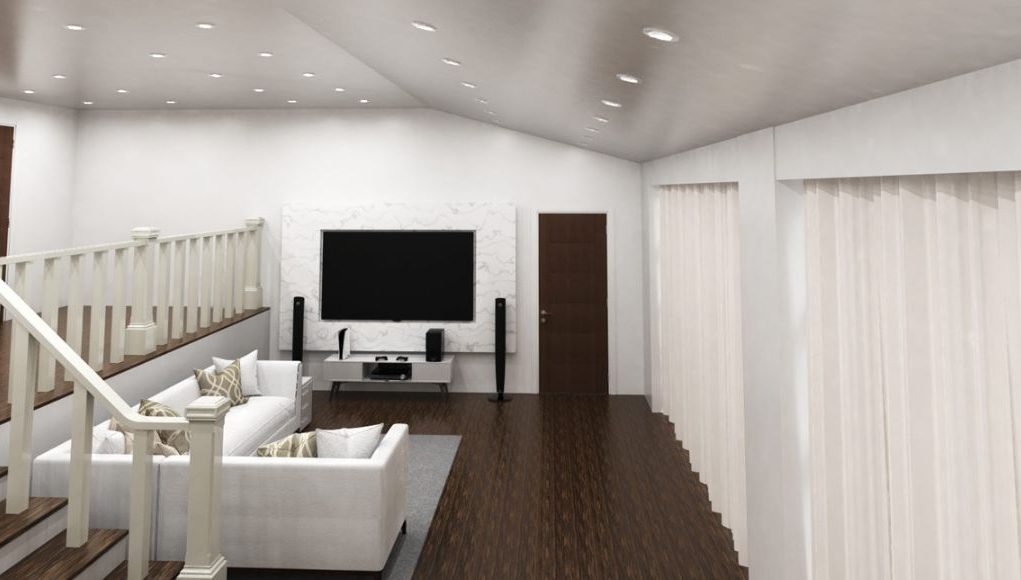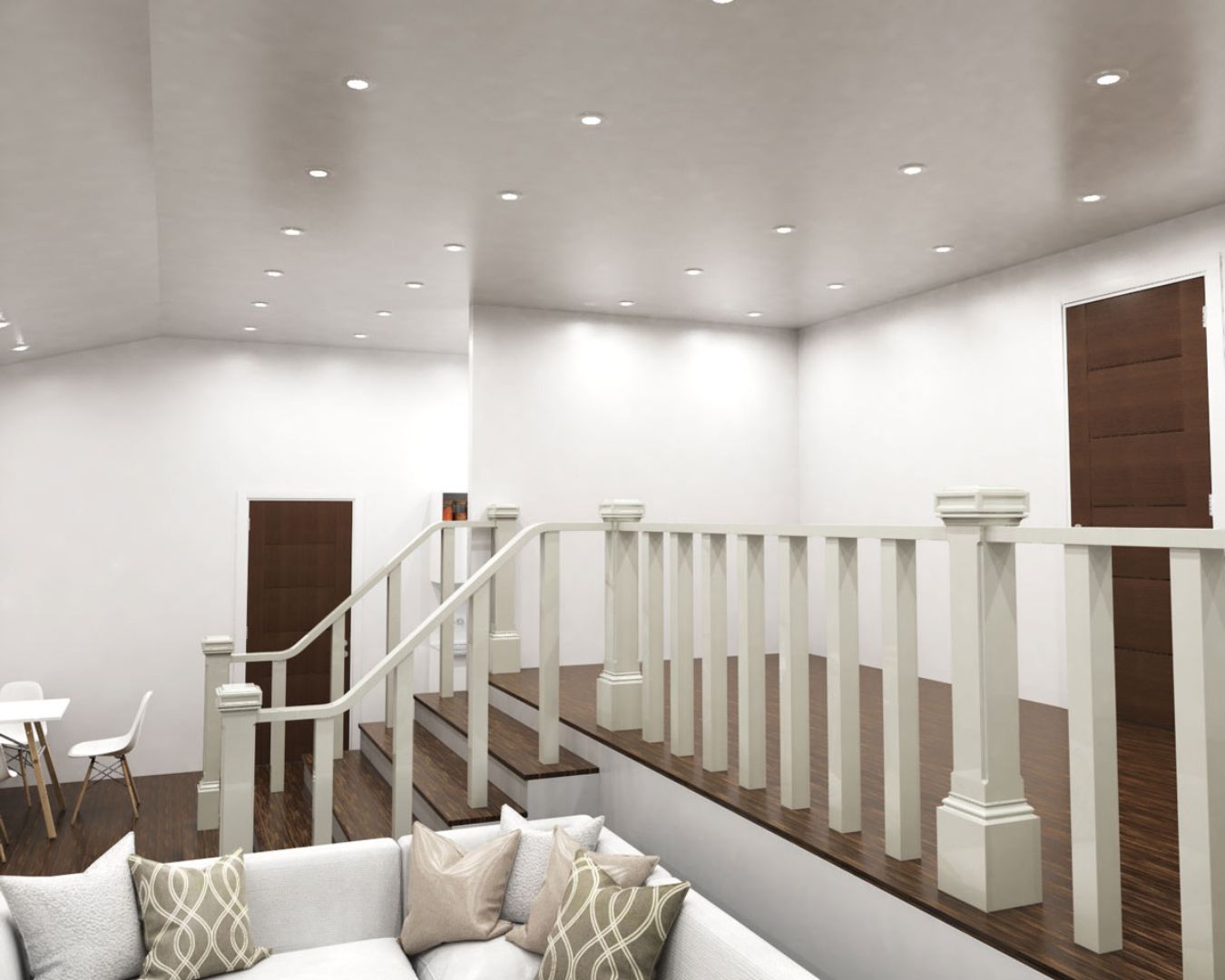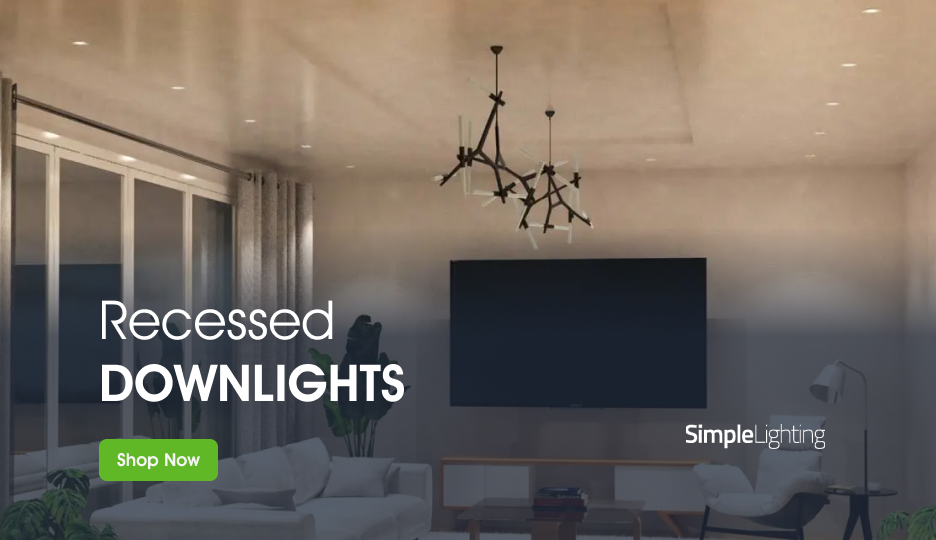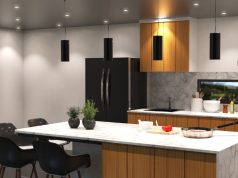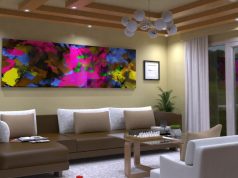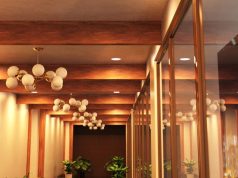Let’s be real. Small rooms and rooms with low ceilings can feel cramped and overwhelming. Plus, it can also be a challenging space to design, especially when it comes to lighting.
Installing the wrong fixture can make the space look more cramped or shadowy. However, with the right lighting, it will add brightness, depth, and comfort.
It’s true that sometimes, to improve a space, you need a complete renovation (as some TikTok videos suggest); however, you can often achieve significant improvements by simply adjusting your lighting.
This guide will walk you through practical ceiling-lighting ideas, explain what to avoid, and offer budget-savvy tips to help you create a room that feels spacious and welcoming… despite being small.
The Challenge of Low Ceilings & Small Rooms
Here’s what you need to realise: Lighting is more than just illumination. Lighting shapes the way we perceive things. Rooms with tall ceilings might have a pendant light or a chandelier that serves both a light source and a beautiful focal point.
But in a small room? Any hanging object or light fixture will most likely sit too low, visually cutting the room in half and making it feel even shorter. Even standard light bulbs will still cut precious headroom.
Other common issues include:
- Harsh shadows: A single hanging fitting can throw uneven light that highlights corners and clutter.
- Visual clutter: Large, ornate fixtures dominate the eye and shrink the space. Not ideal for an already-space-challenged room.
- Reduced clearance: Fixtures that hang too low can interfere with doors, cabinets, or simply bump heads.
The solution? Keep the light source close to the ceiling while maximising brightness and distribution.
Let’s look at the best lighting choices for effectively illuminating your small and low-ceiling rooms.
Light Fixtures that Work Best in Tight Vertical Space
Flush & Semi-Flush Fixtures
Flush-mount lights sit directly against the ceiling, providing a clean, low-profile look that’s ideal for rooms with limited clearance.
Semi-flush designs drop only a few centimetres, adding a decorative touch without sacrificing headroom.
Choose wide, shallow shades or minimalist glass domes to spread light evenly.
Style tip: Matte white or pale metallic finishes blend seamlessly into the ceiling, allowing the fixture to disappear, giving the impression that minimal space was taken up.
Recessed & Surface Downlights
The go-to light for tight spaces because the majority of the light sits within the ceiling cavity. These lights provide bright, shadow-free illumination, ideal for lighting up any room. The caveat? You have to cut out holes in the ceiling.
However, if cutting into the ceiling is not practical, consider surface-mounted downlights as an alternative. They mimic the look of recessed fittings but attach directly to the ceiling.
You can install them around the perimeter of the room to create wall patterns, or install them in a grid to achieve uniform coverage. Using dimmable LED downlights adds flexibility to your lighting.
Reflective & Glossy Surfaces to Bounce Light
Have you ever noticed how white-coloured rooms seem to be brighter and feel more spacious than rooms with a darker shade? The same is true when it comes to your lights!
It’s not only the fixture but the finish that counts. White, glass, chrome, or polished nickel finishes reflect light, while diffused glass shades prevent harsh glare. A fixture with a high-gloss or mirrored interior helps bounce the light across the room, subtly enlarging it and creating a wider coverage.
Using Lighting Tricks to Make a Room Feel Larger
As you might have surmised by now, lighting is not all about brightness. Lighting design is about planning, direction, and layering. Here are some tricks that can help make your space seem larger than it really is.
Wall Uplights or Cove Lighting to Lift the Gaze
Lighting is all about perception. Consider using uplights in small spaces. They push illumination upward, drawing the eye vertically and creating the impression of taller walls. And taller walls equal taller ceilings. You get the idea.
LED strip cove lighting around the perimeter of the ceiling is another way. With this, you can achieve a gentle “floating” effect that lifts your ceiling up.
Uniform Lighting Across the Ceiling
A bright, consistently lit ceiling without any dark spots adds visual height to small spaces, making them appear taller and more spacious. Consider a well-spaced grid of recessed or surface-mounted downlights. They eliminate dark corners and harsh shadows.
Smart Use of Dimmers
A flat, glaring ceiling is a no-no when you have low headroom. Even in small spaces, you want to create depth. And dimmers allow you to adjust the brightness of your lights for tasks, entertainment, or relaxation.
Room-by-Room Examples
Small Bedroom Lighting
Your bedroom is your escape from the stress and worries of the outside world. You don’t want it to feel cramped and suffocated. Consider a flush LED fixture or a simple semi-flush drum shade for style.
Add wall-mounted sconces or bedside pendants with short cords in place of lamp shades, so you can remove nightstands and free up some space. Remember that warm white (between 2700 K and 3000 K) bulbs foster a relaxing atmosphere.
Compact Kitchen & Hallway Lighting
For kitchens with limited height, recessed kitchen downlights or slim track systems are ideal. Position them above worktops for task lighting while keeping headroom clear. There are also low-profile under cabinet lights that can help brighten food prep areas without taking up space.
In hallways, consider installing a series of small flush mounts or a continuous LED strip along the coving to brighten and visually extend the corridor.
Bathroom Lighting in Small Spaces
Before anything else, ensure that you’re getting lights rated for damp areas (IP44 or higher). Recessed bathroom downlights paired with an LED bathroom mirror can create a spa-like brightness without clutter. You can have a front-lit, back-lit, or both, depending on your need.
Check out Backlit vs. Frontlit LED Bathroom Mirrors: Which Is Best? for a more detailed breakdown.
Materials, Colours & Bulbs to Avoid / Embrace
Some things to consider when selecting lights for tight spaces.
- Avoid dark, heavy materials or oversized shades—they visually weigh down the room.
- Instead, embrace light-coloured metals (brushed aluminium, chrome), frosted glass, or acrylic.
- Avoid warm, overly yellow bulbs if the space is already dim. Instead, choose LEDs with a colour temperature of around 3000K for balanced, natural light.
- Get high-CRI (Colour Rendering Index) bulbs for accurate colours and a fresher look.
Budget Considerations & Safety
- Only use LED bulbs — LEDs keep running costs low and eliminate the need for frequent bulb changes. Perfect for hard-to-reach places.
- Quality over quantity — A few well-placed, dimmable fixtures usually outperform multiple cheap lights. So make sure to plan out the layout of your lights.
- Check ratings — In bathrooms or kitchens, ensure fittings are IP-rated (IP44 or higher) for moisture resistance. The rest of the house only needs IP20 lights.
- Hire a qualified electrician for any rewiring, especially when installing recessed lights or dimmer switches. They can also ensure that your lights comply with UK standards.
Conclusion
Having a small or low-ceiling space might be more challenging to light than larger rooms with high ceilings, but it’s not impossible.
Though light cannot make a space larger in reality, it can at least “distort” perception to make a small room feel wider or taller. And it all comes down to finding the right fixtures and being a little more creative with your lights.
Some key takeaways:
- Keep fixtures close to the ceiling.
- Use reflective materials and light finishes to enhance brightness.
- Employ layering techniques: use wall uplights, cove strips, and dimmers to add height and flexibility.
- Select LED bulbs with a neutral white tone and a high CRI for a spacious ambience.
With these ideas, even the most compact room can feel airy and inviting.
Simple Lighting offers a wide range of low-profile ceiling lights, LED downlights, and energy-efficient bulbs to help you start creating the bright, open room you’ve imagined.
Browse our collection today!


